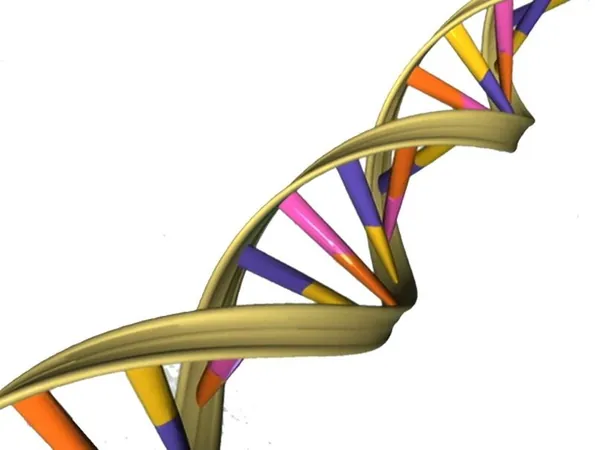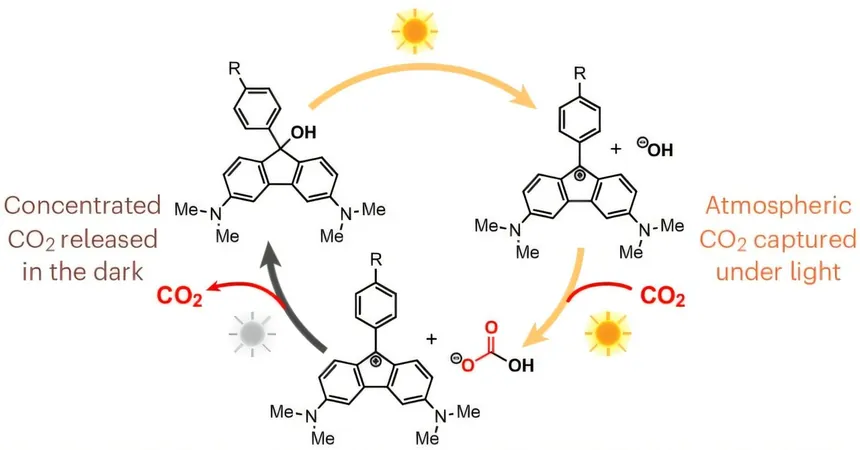
Revolutionary CRISPR Breakthrough: Nanoparticles Triple Gene-Editing Efficiency!
2025-09-01
Author: Wei
Unlocking the Future of Medicine
Imagine a world where we can rewrite the genetic code of diseases—thanks to the groundbreaking technology known as CRISPR! While its potential to transform healthcare is staggering, effective delivery of its gene-editing machinery has been a major hurdle. But recent advancements from chemists at Northwestern University may hold the key to overcoming this barrier.
Introducing LNP-SNAs: The Game-Changer in CRISPR Delivery
Meet the lipid nanoparticle spherical nucleic acids (LNP-SNAs)—a revolutionary nanostructure designed to enhance CRISPR delivery. These tiny powerhouses encapsulate essential CRISPR components, including the Cas9 enzyme and guide RNA, all cloaked in a DNA shield. This unique design not only protects the CRISPR tools but also directs them to specific organs and cells, making the delivery process smoother.
Lab Tests Show Mind-Blowing Results!
In a series of lab tests involving various human and animal cell types, LNP-SNAs outperformed traditional delivery systems used in COVID-19 vaccines by tripling CRISPR's effectiveness and concurrently reducing toxicity. Astonishingly, the success rate for precise DNA repairs soared by over 60% compared to existing methods!
What This Means for the Future of Genetic Medicine
The research, published in the Proceedings of the National Academy of Sciences, heralds a new era of safer, more reliable genetic therapies. It emphasizes a revolutionary principle: the design of the nanomaterial profoundly impacts its effectiveness, a key insight in the rapidly evolving field of structural nanomedicine.
Chad A. Mirkin, a pioneer in nanotechnology and the study's lead author, shared, "CRISPR is a powerful tool capable of correcting gene defects that lead to diseases. But delivering it successfully to the right cells has been the real challenge." He highlights that using SNAs can maximize CRISPR's capabilities, leading to broader applications.
The Delivery Dilemma: Why CRISPR Needs a Ride
CRISPR cannot operate in isolation; it requires a delivery vehicle to reach its target within cells. Traditional methods, like viral vectors and lipid nanoparticles, each come with their pros and cons—viruses are effective but often provoke immune reactions, while lipid nanoparticles are safer but not very efficient.
Mirkin noted the struggle: "Only a small fraction of CRISPR tools successfully enter cells, and even fewer make it to the nucleus where they can do their work." An inefficient method involves extracting cells, editing them, and returning them—clearly not practical.
SNAs: The DNA-Powered Solution
To address this, Mirkin and his team utilized spherical nucleic acids (SNAs), which can encapsulate cargo effectively. These 50-nanometer structures have demonstrated remarkable cell-entry capabilities, with several already in clinical trials, emphasizing their potential for targeted delivery.
By adding a dense layer of engineered DNA strands to their LNP-SNAs, the team not only improved cell absorption but also tailored the delivery to specific cell types. Mirkin remarked, "Minor structural changes can revolutionize cell uptake efficiency, making SNAs immensely versatile for various applications."
A Bright Future Ahead
Following their laboratory successes, Mirkin's team is gearing up for further testing in multiple disease models. The adaptability of their system makes it a powerful candidate for countless therapeutic uses.
Northwestern's biotechnology spin-off, Flashpoint Therapeutics, is working to bring this innovative technology to clinical trials swiftly.
Mirkin concludes, "With CRISPR's potential to revolutionize medicine, the design of our delivery mechanisms is crucial. By combining CRISPR with SNAs, we’re on the brink of unlocking its full therapeutic potential, paving the way for a new era in genetic medicine!"



 Brasil (PT)
Brasil (PT)
 Canada (EN)
Canada (EN)
 Chile (ES)
Chile (ES)
 Česko (CS)
Česko (CS)
 대한민국 (KO)
대한민국 (KO)
 España (ES)
España (ES)
 France (FR)
France (FR)
 Hong Kong (EN)
Hong Kong (EN)
 Italia (IT)
Italia (IT)
 日本 (JA)
日本 (JA)
 Magyarország (HU)
Magyarország (HU)
 Norge (NO)
Norge (NO)
 Polska (PL)
Polska (PL)
 Schweiz (DE)
Schweiz (DE)
 Singapore (EN)
Singapore (EN)
 Sverige (SV)
Sverige (SV)
 Suomi (FI)
Suomi (FI)
 Türkiye (TR)
Türkiye (TR)
 الإمارات العربية المتحدة (AR)
الإمارات العربية المتحدة (AR)